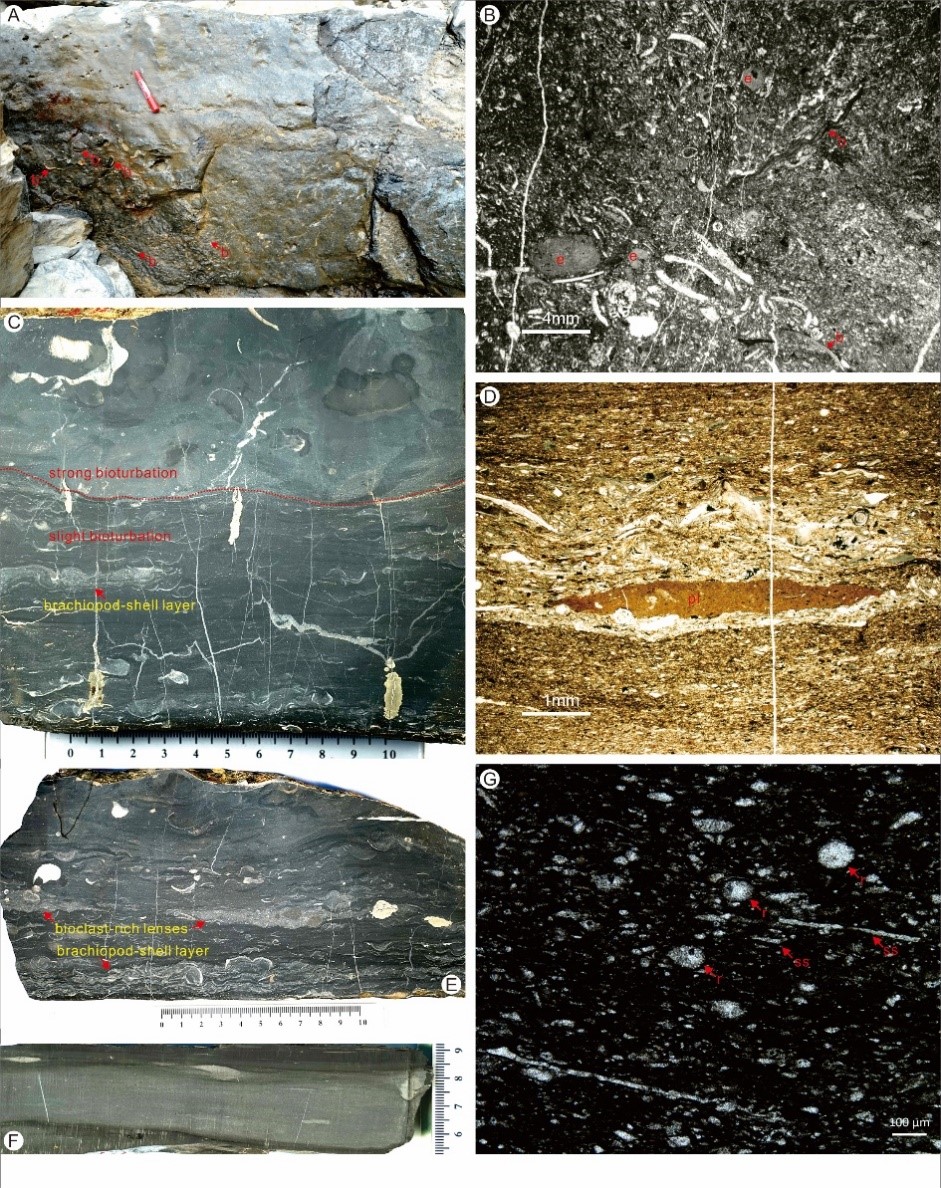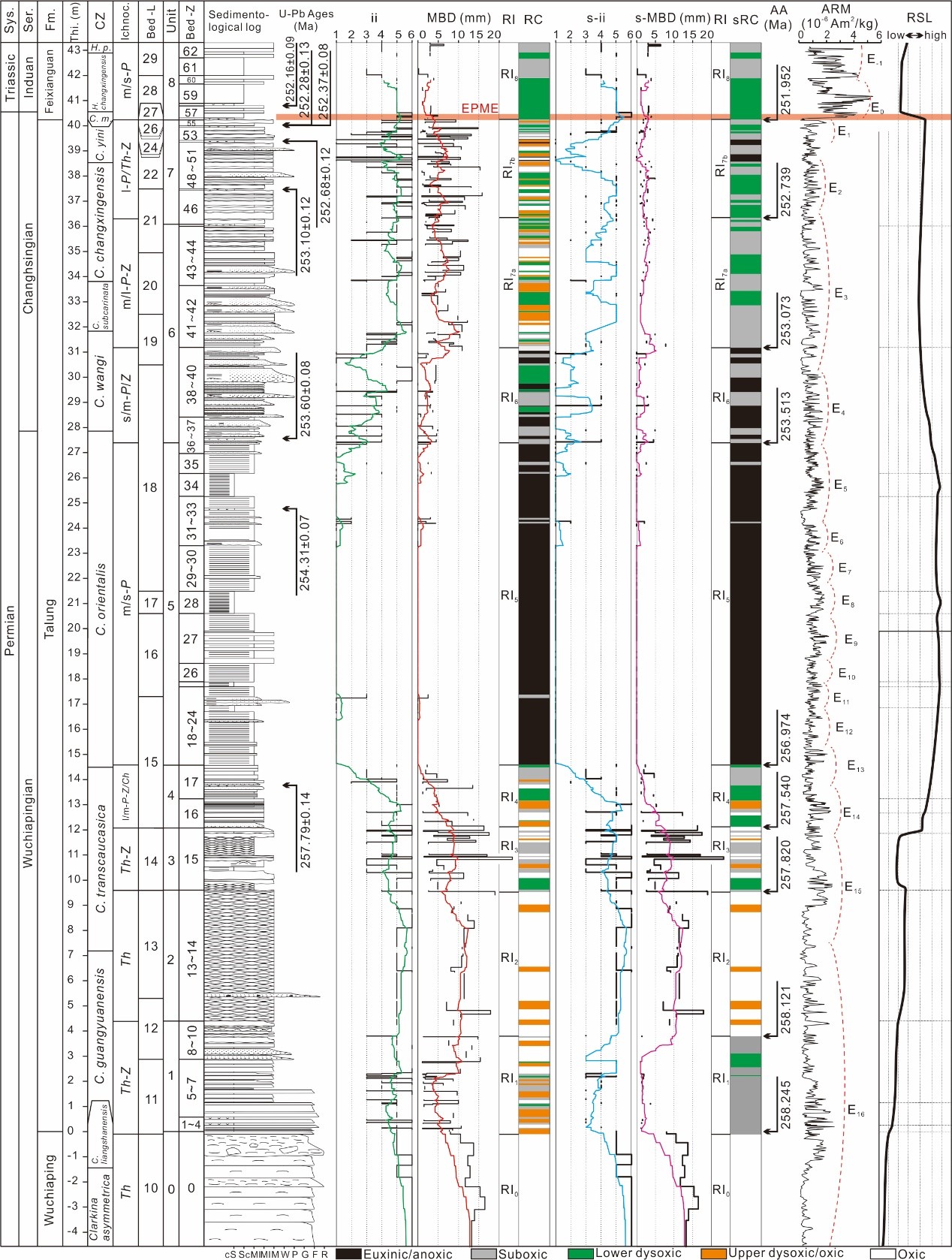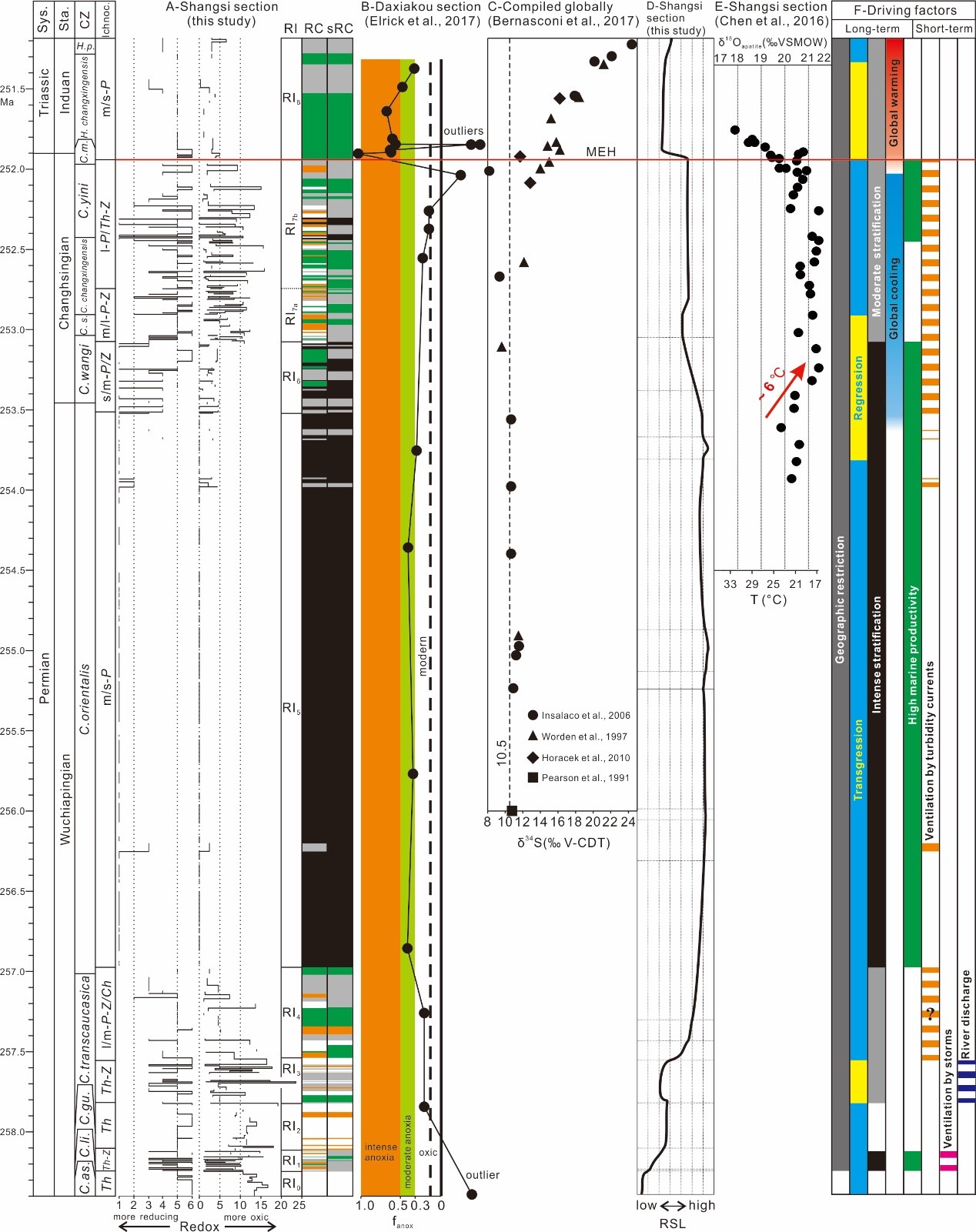During the Late Permian to Early Triassic, benthic marine redox conditions in the Shangsi area varied on both short-term and long-term time scales. This study has scientific implications for revealing the spatial and temporal distribution of anoxic events, and the importance of oceanic anoxia in the end-Permian mass extinction (EPME).
About 252 million years ago, more than 81 percent of animal life in the oceans and 89 percent of animal life on land went extinct. Extensive volcanism (the Siberian large igneous province magmatism and felsic volcanism in South China) is the most probable trigger of this life crisis.
Oceanic/marine anoxia triggered by volcanisms is the most plausible killing mechanism for the EPME in the marine realm. Although a wealth of studies had supported the latest Permian-Griesbachian extreme anoxia, there is some opposite evidence indicating the occurrence of oxic benthic marine conditions during the Permian-Triassic interval.
In addition, it has been reported that the deterioration of the marine environment was probably before the EPME. However, compared to a vast number of studies on the Permian-Triassic interval, only a few studies focusing on the paleo-oxygen levels during the Late Permian have been conducted. Therefore, further work needs to be carried out on the benthic marine redox conditions before and during the EPME.
Recently, Dr. ZHENG Quanfeng, Prof. ZHANG Hua, WANG Yue, and CAO Changqun from the Nanjing Institute of Geology and Palaeontology of the Chinese Academy of Sciences (NGIPAS), collaborating with researchers from China University of Mining and Technology and Nanjing University, made high-resolution sedimentological and ichnological studies to reveal benthic marine redox conditions and driving mechanisms from Late Permian to the earliest Triassic at Shangsi, South China.
This study was published in Earth-Science Reviews on Dec. 20.
"We found that high-frequency (centimeter- to decimeter-scale) and secular (meter- to tens of meters-scale) benthic oxygen-level variations were developed at Shangsi", Dr. ZHENG says. The high-frequency variations were mostly local signals generated by transient episodic mixing and ventilation by storms and turbidity currents. While the secular variations were regional or global signals caused by regional factors and global climate changes.
Anoxic/euxinic benthic marine conditions prevailed throughout the middle Wuchiapingian to the early Changhsingian at Shangsi, which persisted for 3.9 Myr (256.974–253.073 Ma). This long-term Wuchiapingian anoxia event can be correlated both regionally and globally, and was caused by paleogeographic restrictions, relative high sea levels, high marine productivities, and possible global climate changes.
"In addition, we found a long-term global oxygenation event occurred during the Changhsingian, which initiated at ~253.513 Ma, followed by a major oxygenation pulse at 253.073 Ma, and further intensified at 252.739 Ma at Shangsi." This Changhsingian global oxygenation event was probably triggered by an early Changhsingian global cooling event, during which the average surface ocean temperature declined ~6 ℃, and the cold climate persisted during most of the Changhsingian.
This research was supported by the Chinese Academy of Sciences and the National Natural Science Foundation of China.
Reference: Zheng, Q.F.*, Zhang, H., Yuan, D.X., Wang, Y., Wang, W.Q., Cao, C.Q., Shen, S.Z., 2022. High-resolution sedimentology, ichnology, and benthic marine redox conditions from Late Permian to the earliest Triassic at Shangsi, South China: Local, regional, and global signals and driving mechanisms. Earth-Science Reviews, 225: https://doi.org/10.1016/j.earscirev.2021.103898.
Table 1 Summary of characteristics used to define redox conditions during deposition
|
Conditions |
MBD (mm) |
ii |
Sedimentary fabric |
Oxygen (ml/l) |
|
Euxinic/anoxic |
0 |
1 |
Well laminated; no sighs of biogenic structures. |
0 (H2S) |
|
suboxic |
0-5 |
2-4 |
Well to faintly discontinuously laminated; partly bioturbated. |
0-0.15 |
|
Lower dysoxic |
0-5 |
5-6 |
Completely bioturbated or homogenized. |
0.15-0.5 |
|
Upper dysoxic/oxic |
5-10 |
5-6 |
Completely bioturbated or homogenized. |
≥0.5 |
|
Oxic |
≥10 |
5-6 |
Completely bioturbated or homogenized. |
≥2.0 |

Fig. 1. Lithofacies, microfacies, and storm-induced structures (A, C-E) from the top Wuchiaping Formation (A and B) and the basal Talung Formation (C-G). (Image by NIGPAS)

Fig. 2. Late Permian to the earliest Triassic stratigraphic distribution of conodont zones (CZ), ichnocoenoses (Ichnoc.), sedimentological log, U–Pb ages, ichnofabirc index (ii), maximum burrow diameter (MBD), redox interval (RI), redox-condition column (RC), secular ichnofabric index (s-ii), secular maximum burrow diameter (s-MBD), secular redox-condition column (sRC), astronomical ages (AA), eccentricity cycles (E) proxied by anhysteretic remanent magnetization (ARM), and relative sea level (RSL) at the Shangsi section. The U–Pb ages are from Shen et al. (2011); the ARM data is from Wu et al. (2013). (Image by NIGPAS)

Fig. 3. Driving factors for the evolution of benthic-marine redox conditions at Shangsi from the Lopingian to the earliest Triassic. (Image by NIGPAS)
Contact:
LIU Yun, Propagandist
Email: yunliu@nigpas.ac.cn
Nanjing Institute of Geology and Palaeontology, Chinese Academy of Sciences
Nanjing, Jiangsu 210008, China
Download:
